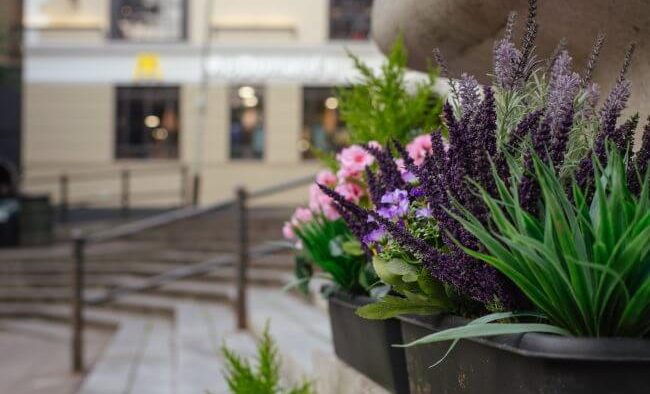50% of people don’t know real plants from fakes

Artificial plants are a topic of great debate in the world of interior design, with some influential figures swearing by them and others adamant that only real foliage will do. However, new research from Blooming Artificial has found that when it comes to this part of interior – and exterior – styling, the Great British public can’t tell the real deal from a fake. Blooming Artificial created a simple photo quiz to see how good people were at identifying fake plants and real plants from a lengthy line-up of photos.
Their findings show that on average, online;
- Around 50% of people thought that real plants were fake
- 40% of people thought that fake plants were real
- The 55-64 age group were the best at knowing the difference, getting 56% of the answers right on average
People were almost as likely to guess that real plants were fakes as they were to guess that fake plants were real, and with an average score of 55% correct, statistics suggest that most people were simply guessing at random.
Despite a lot of people thinking that artificial plants are obvious and easy to spot, online and in the real world it’s more difficult to identify them than we think. Blooming Artificial also created a pop-up garden recently, so that they could see if people were fooled in the real world as well as in photos. Hundreds of passers-by expressed their surprise at finding out the greenery wasn’t real.
“I didn’t believe my eyes when I walked around the corner, it’s like a mirage!” One woman said. “I just can’t believe they aren’t real plants.”
“When you think about artificial plants, people often think of low-quality products that are obviously made from plastic.” Blooming Artificial’s Alick Burnett said. “But with products made from real bamboo and wood as well as the highest-quality synthetic materials, of course I’m not surprised that many people can’t spot the difference between our plants and the real thing.”
50% of people don’t know real plants from fakes
Artificial plants are a topic of great debate in the world of interior design, with some influential figures swearing by them and others adamant that only real foliage will do. However, new research from Blooming Artificial has found that when it comes to this part of interior – and exterior – styling, the Great British public can’t tell the real deal from a fake.
Blooming Artificial created a simple photo quiz to see how good people were at identifying fake plants and real plants from a lengthy line-up of photos.
Their findings show that on average, online;
- Around 50% of people thought that real plants were fake
- 40% of people thought that fake plants were real
- The 55-64 age group were the best at knowing the difference, getting 56% of the answers right on average
People were almost as likely to guess that real plants were fakes as they were to guess that fake plants were real, and with an average score of 55% correct, statistics suggest that most people were simply guessing at random.
People were almost as likely to guess that real plants were fakes as they were to guess that fake plants were real,
Despite a lot of people thinking that artificial plants are obvious and easy to spot, online and in the real world it’s more difficult to identify them than we think. Blooming Artificial also created a pop-up garden recently, so that they could see if people were fooled in the real world as well as in photos. Hundreds of passers-by expressed their surprise at finding out the greenery wasn’t real.
“I didn’t believe my eyes when I walked around the corner, it’s like a mirage!” One woman said. “I just can’t believe they aren’t real plants.”
“When you think about artificial plants, people often think of low-quality products that are obviously made from plastic.” Blooming Artificial’s Alick Burnett said. “But with products made from real bamboo and wood as well as the highest-quality synthetic materials, of course I’m not surprised that many people can’t spot the difference between our plants and the real thing.”





